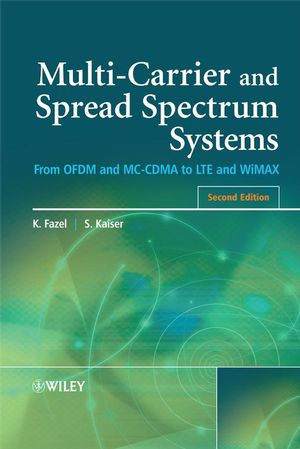

Most ebook files are in PDF format, so you can easily read them using various software such as Foxit Reader or directly on the Google Chrome browser.
Some ebook files are released by publishers in other formats such as .awz, .mobi, .epub, .fb2, etc. You may need to install specific software to read these formats on mobile/PC, such as Calibre.
Please read the tutorial at this link: https://ebookbell.com/faq
We offer FREE conversion to the popular formats you request; however, this may take some time. Therefore, right after payment, please email us, and we will try to provide the service as quickly as possible.
For some exceptional file formats or broken links (if any), please refrain from opening any disputes. Instead, email us first, and we will try to assist within a maximum of 6 hours.
EbookBell Team

4.8
24 reviewsMulti-Carrier and Spread Spectrum Systems is one of the first books to describe and analyze the basic concepts of multi-carrier OFDM transmission and its combination with spread spectrum (MC-CDMA). The different architectures and detection strategies as well as baseband-related transceiver components are explained. This includes topics like FEC channel coding and decoding, modulation and demodulation (IFFT/FFT), digital I/Q-generation, time and frequency synchronisation, channel estimation, frequency domain equalization and RF aspects such as phase noise and non-linearity issues. Concrete examples of its applications for cellular mobile communication systems (B3G/4G) are given. Further derivatives of MC-SS (such as OFDMA, SS-MC-MA and DFT-spread OFDM) and their corresponding applications in the LTE, WiMAX, WLAN and DVB-RCT standards are detailed. Capacity and flexibility enhancements of multi-carrier OFDM systems by different MIMO diversity techniques such as space time/frequency coding (STC, SFC) and software defined radio concepts are also described.
Written in a highly accessible manner this book provides a unique reference on the topics of multi-carrier and spread spectrum communications, assisting 4G engineers with their implementation.